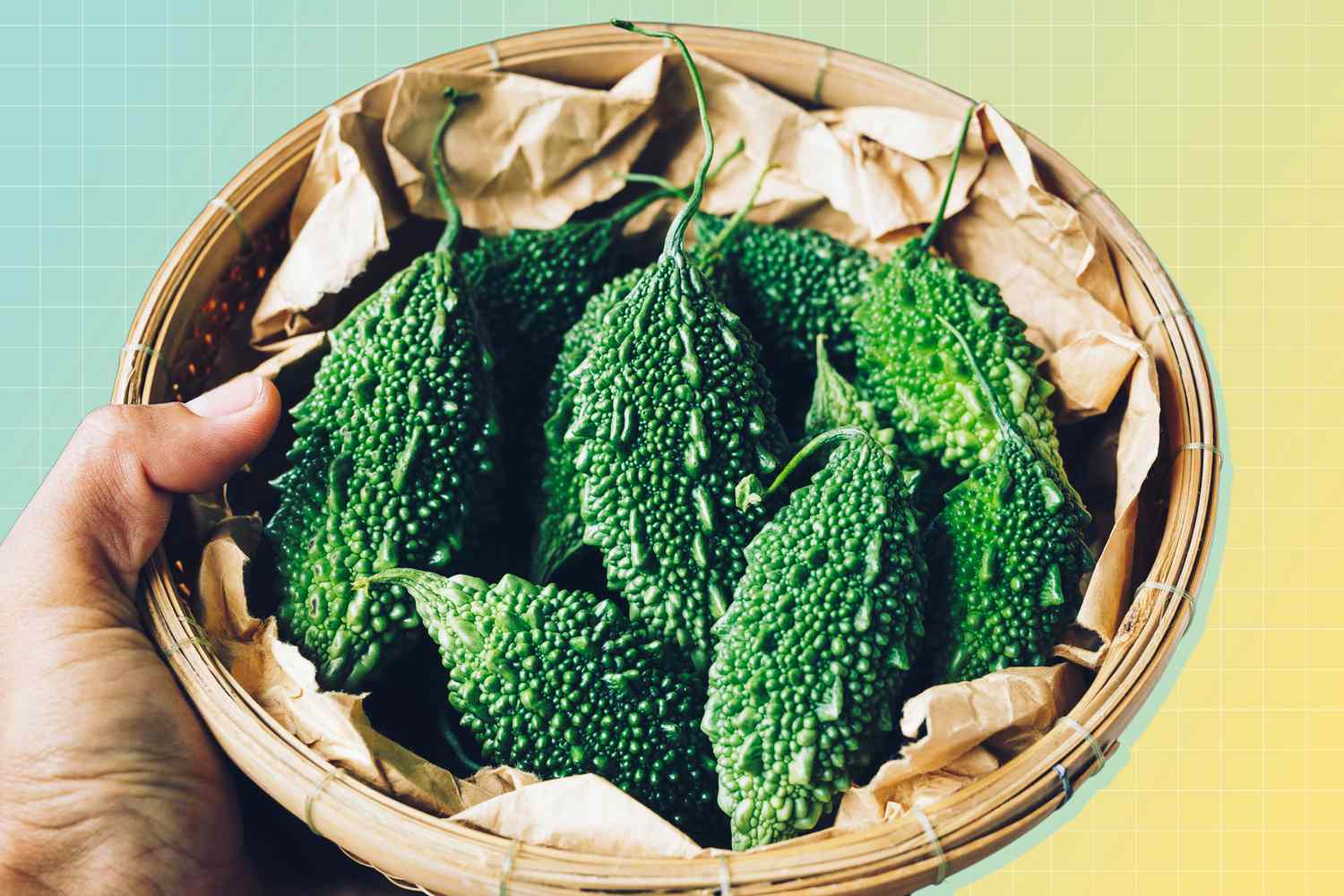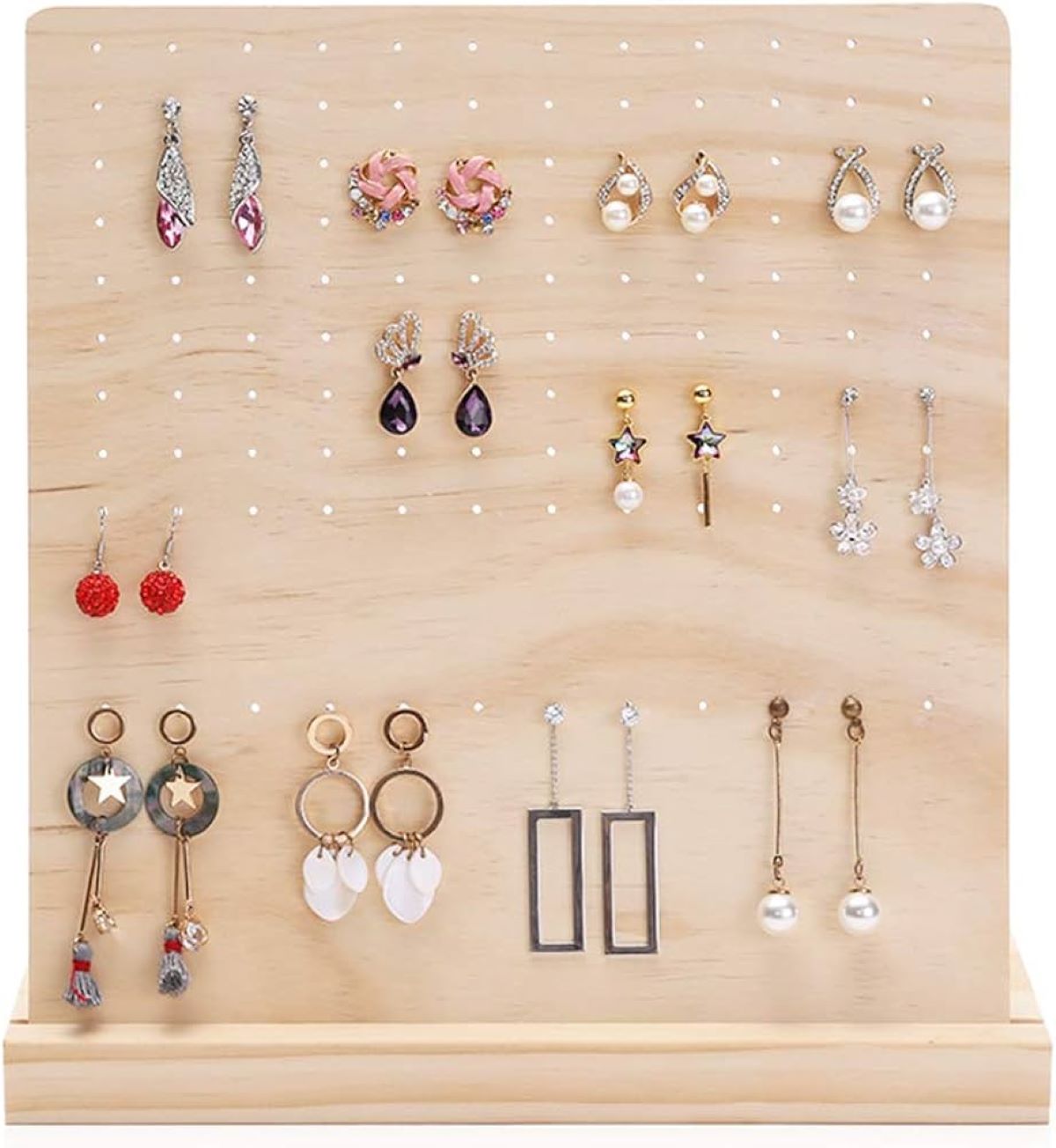

Articles
How To Store Bitter Melon
Modified: August 25, 2024
Discover the best techniques and tips for storing bitter melon effectively with our informative articles. Ensure your bitter melon stays fresh and flavorful for longer.
(Many of the links in this article redirect to a specific reviewed product. Your purchase of these products through affiliate links helps to generate commission for Storables.com, at no extra cost. Learn more)
Introduction
Welcome to the world of bitter melon storage! Bitter melon, also known as bitter gourd or karela, is a unique and versatile vegetable that is widely used in Asian cuisines for its distinct bitter taste and numerous health benefits. Whether you grow your own bitter melon or have purchased it from a grocery store or farmer’s market, it’s important to know how to properly store it to maintain its freshness and flavor for as long as possible.
In this article, we will explore various methods of storing bitter melon, including refrigeration, freezing, dehydrating, and using preservatives. We’ll also provide you with tips and tricks to ensure that your bitter melon stays fresh and delicious, ready to be enjoyed in your favorite recipes.
But before we dive into the storage techniques, let’s take a look at some of the remarkable benefits that bitter melon has to offer.
Key Takeaways:
- Bitter melon offers numerous health benefits, including supporting digestive health, managing blood sugar levels, and boosting the immune system. Proper storage methods such as refrigeration, freezing, and dehydration can help maintain its freshness and flavor for extended periods.
- Selecting firm, vibrant, and unwrinkled bitter melons is crucial for successful storage. Preparing them by washing, removing seeds and pith, and choosing the right storage method, such as refrigeration, freezing, dehydrating, or using preservatives, can help ensure their longevity and quality.
Read more: How To Save Bitter Melon Seeds
Benefits of Bitter Melon
Bitter melon is not only known for its unique flavor but also for its incredible health benefits. It is packed with essential nutrients, vitamins, and minerals that can contribute to overall well-being. Here are some of the key benefits of incorporating bitter melon into your diet:
1. Rich in Nutrients
Bitter melon is a low-calorie vegetable that is high in fiber, making it an excellent choice for those looking to maintain a healthy weight. It is also rich in vitamins and minerals such as vitamin C, vitamin A, potassium, and iron.
2. Supports Digestive Health
The high fiber content in bitter melon can aid in digestion and promote regular bowel movements. It also contains enzymes that help to stimulate the liver and gallbladder, supporting the overall health of the digestive system.
3. Manages Blood Sugar Levels
Bitter melon has long been used in traditional medicine to help manage blood sugar levels. It contains compounds that mimic the action of insulin and help improve glucose utilization. Regular consumption of bitter melon may be beneficial for individuals with diabetes or those at risk of developing the condition.
Read more: How To Plant Bitter Melon Seeds
4. Boosts Immune System
The presence of antioxidants, such as vitamin C, in bitter melon can help strengthen the immune system and protect the body’s cells from damage caused by free radicals. A strong immune system is vital for fending off illness and maintaining optimal health.
5. Anti-Inflammatory Properties
Bitter melon has been found to possess anti-inflammatory properties, thanks to its active compounds like charantin and momordicin. These compounds help reduce inflammation in the body and may be beneficial in managing conditions such as arthritis and other inflammatory diseases.
These are just a few of the many benefits that bitter melon offers. With its unique combination of nutrients and healing properties, incorporating bitter melon into your meals can be a fantastic way to support your overall health and well-being.
Selecting the Right Bitter Melon
When it comes to storing bitter melon, selecting the right ones is crucial. Here are some tips to help you choose the best bitter melon for storage:
1. Look for Firmness
Opt for bitter melons that are firm to the touch. Avoid those that feel soft or have any signs of bruising or damage. A firm bitter melon indicates that it is fresh and will have a longer shelf life.
Read more: How To Store Melons
2. Check the Color
Choose bitter melons that have a vibrant and deep green color, indicating that they are ripe and at their peak freshness. Avoid bitter melons with yellowing or browning skin, as this can be a sign of overripeness.
3. Consider Size
The size of bitter melon can vary, but it’s generally recommended to choose smaller to medium-sized ones for better flavor and texture. Smaller bitter melons are often more tender and have fewer seeds, making them ideal for various recipes.
4. Assess the Surface Texture
Look for bitter melons with a smooth and unwrinkled surface. Avoid ones with rough or wrinkled skin, as this can indicate loss of moisture and decreased freshness.
5. Smell the Aroma
Give the bitter melons a gentle sniff. They should have a slightly sweet and grassy aroma. Any unpleasant or sour smell could be a sign of spoilage.
By selecting bitter melons that meet these criteria, you’ll have a better chance of storing them successfully and enjoying their freshness and flavor for an extended period of time.
Read more: How To Store Angostura Bitters
Preparing Bitter Melon for Storage
Once you have selected the right bitter melons for storage, it’s important to take the necessary steps to prepare them properly. Follow these steps to ensure your bitter melon stays fresh and ready for future use:
1. Wash the Bitter Melon
Start by washing the bitter melon thoroughly under cool running water. Use a gentle scrub brush to remove any dirt or debris that may be present on the surface. This will help remove any bacteria or contaminants that could cause spoilage.
2. Remove the Seeds and Pith
Using a sharp knife, carefully cut the bitter melon in half lengthwise. Scoop out the seeds and pith with a spoon or knife. This step is necessary as the seeds and pith can contribute to a bitter taste and shorten the shelf life of the bitter melon.
3. Slice or Chop as Desired
Depending on how you plan to use the bitter melon, you can either slice it into thin rounds or chop it into smaller pieces. Keep in mind that smaller pieces are easier to store and can be more convenient for future use.
Read more: How To Store Honeydew Melon
4. Blanch the Bitter Melon (Optional)
If you prefer to store the bitter melon without blanching, you can skip this step. However, blanching can help preserve the color and texture of the bitter melon. To blanch, bring a pot of water to a boil and immerse the bitter melon slices in the boiling water for a minute or two. Then, transfer them to a bowl of ice water to stop the cooking process.
By following these preparatory steps, you’ll ensure that your bitter melon is clean, free from seeds, and ready for storage in the method of your choice.
Storing Bitter Melon in the Refrigerator
One of the most common methods to store bitter melon is by keeping it in the refrigerator. Here’s how you can store bitter melon in the refrigerator to maintain its freshness:
1. Wrap in Plastic Wrap
For short-term storage, wrap the cleaned and prepared bitter melon tightly in plastic wrap or place it in a sealed plastic bag. This will help prevent moisture loss and protect it from absorbing odors from other foods in the refrigerator.
2. Place in the Vegetable Drawer
Find a spot in your refrigerator’s vegetable drawer where the temperature and humidity levels are relatively stable. Place the wrapped bitter melon in this drawer, ensuring it is not overcrowded. The vegetable drawer creates a slightly higher humidity environment, which helps to maintain the crispness of the bitter melon.
Read more: How To Grow Melon Seeds
3. Store Away from Strong Odors
Keep your bitter melon away from foods with strong odors, as the bitter melon can easily absorb and take on those flavors. It is recommended to store the bitter melon away from items like onions, garlic, and strong-smelling fruits or vegetables.
4. Check Regularly
While bitter melon can typically be stored in the refrigerator for up to a week, it’s important to check on it regularly. Remove any bitter melon that shows signs of spoilage such as mold, mushiness, or an off-putting smell.
Remember, storing bitter melon in the refrigerator helps to preserve its freshness and flavor, ensuring that you can enjoy it in your favorite dishes for an extended period of time.
Freezing Bitter Melon
If you have an abundance of bitter melon or want to extend its shelf life even further, freezing can be a great option. Here’s how to freeze bitter melon:
1. Prepare the Bitter Melon
Start by washing the bitter melon thoroughly and removing the seeds and pith. Slice the bitter melon into desired pieces or shapes. Blot the slices dry with a clean kitchen towel to remove excess moisture.
Read more: How Long To Germinate Bitter Gourd
2. Blanch the Bitter Melon
Blanching bitter melon before freezing helps maintain its color, texture, and nutritional value. Bring a pot of water to a boil and carefully drop the bitter melon slices into the boiling water. Allow them to blanch for a minute or two, then quickly transfer them to a bowl of ice water to cool.
3. Drain and Pack
After blanching, drain the bitter melon slices and pat them dry with a kitchen towel or paper towel. Place the slices in a single layer on a baking sheet or tray lined with parchment paper. This will prevent them from sticking together during freezing.
4. Freeze
Place the baking sheet or tray with the bitter melon slices in the freezer and let them freeze for a few hours, or until they are completely frozen. Freezing them individually before packing prevents them from clumping together in one solid mass.
5. Transfer to Freezer Bags
Once the bitter melon slices are frozen, transfer them to freezer-safe bags or airtight containers. Make sure to squeeze out any excess air before sealing the bags to prevent freezer burn. Label the bags with the date for easy reference.
Read more: How Long Does It Take Melons To Germinate
6. Store in the Freezer
Place the sealed bags of bitter melon in the freezer, making sure they are stored in a flat position to maximize space. The bitter melon can be kept in the freezer for up to 6 months.
When you’re ready to use the frozen bitter melon, simply take out the desired amount from the freezer and thaw it in the refrigerator before incorporating it into your recipes.
Freezing bitter melon allows you to enjoy its flavor and nutritional benefits even when it’s out of season, making it a convenient option for long-term storage.
Dehydrating Bitter Melon
Another effective method for storing bitter melon is to dehydrate it. Dehydrating bitter melon removes the moisture, extending its shelf life and preserving its flavor. Here’s how you can dehydrate bitter melon:
1. Preparation
Wash the bitter melon thoroughly and remove the seeds and pith. Slice the bitter melon into thin, even slices. The thickness can vary depending on personal preference, but aim for slices that are approximately 1/4 inch thick.
2. Pre-Treatment (Optional)
Some people choose to pre-treat bitter melon slices with salt to reduce bitterness and enhance flavor. To do this, sprinkle salt over the bitter melon slices and let them sit for about 10-15 minutes. Rinse the slices under running water to remove excess salt and then pat them dry.
Read more: How To Store Store-Bought Bread
3. Arrange on Dehydrator Trays
Place the bitter melon slices on dehydrator trays in a single layer, ensuring they do not overlap. Leave some space between each slice for proper air circulation. This allows the moisture to evaporate effectively and helps in the dehydration process.
4. Dehydrate
Set the dehydrator to a temperature of around 130-140°F (54-60°C) and let the bitter melon slices dehydrate for approximately 8-12 hours. The exact time may vary depending on the thickness of the slices and the dehydrator model being used. Check the bitter melon periodically and rotate the trays, if necessary, to ensure even drying.
5. Test for Dryness
To determine if the bitter melon is adequately dehydrated, remove a slice from the dehydrator and let it cool for a few minutes. The slice should be dry and crisp to the touch. If it feels leathery or still has moisture, continue dehydrating for another hour or so and test again until desired texture is achieved.
6. Cool and Store
Allow the dehydrated bitter melon slices to cool completely before storing them. Once cooled, transfer the slices to airtight containers, such as glass jars or resealable bags. Store them in a cool, dry place away from direct sunlight. Properly dehydrated bitter melon can last for several months, if not longer.
Dehydrated bitter melon is a convenient option for storage, as it takes up less space and can be easily incorporated into various recipes or enjoyed as a healthy, crunchy snack.
Read more: How To Store Basil From Grocery Store
Using Preservatives to Store Bitter Melon
Preservatives can be used to extend the shelf life of bitter melon and prevent spoilage. While it’s best to consume fresh bitter melon, using preservatives can be a viable option if you need to store it for a longer period of time. Here are a few commonly used preservatives to help store bitter melon:
1. Salt Solution
One of the simplest and most effective ways to preserve bitter melon is by immersing it in a salt solution. Make a solution by dissolving salt in water, creating a brine. Submerge the bitter melon slices in the brine, ensuring they are fully covered. The salt acts as a preservative by inhibiting the growth of bacteria and other microorganisms. Keep the bitter melon in the salt solution in an airtight container in the refrigerator.
2. Vinegar Solution
Another popular preservative is vinegar. Make a solution by mixing equal parts vinegar and water. Place the bitter melon slices in the solution, making sure they are fully submerged. The acidity of vinegar helps prevent the growth of bacteria and prolongs the shelf life of the bitter melon. Store the bitter melon in the vinegar solution in an airtight container in the refrigerator.
3. Sugar Syrup
Sugar syrup can also be used as a preservative for bitter melon. Dissolve sugar in water to create a syrup, adjusting the sweetness level to your preference. Place the bitter melon slices in the syrup, ensuring they are completely immersed. The sugar acts as a preservative by creating an environment that is inhospitable to bacteria and other microorganisms. Store the bitter melon in the sugar syrup in an airtight container in the refrigerator.
Read more: How To Store Cinnabons
4. Pickling
Pickling is another preservation method that can be used for bitter melon. Prepare a pickling solution using vinegar, water, sugar, and spices such as mustard seeds, peppercorns, or chili flakes. Pack the bitter melon slices into sterilized jars and pour the hot pickling solution over them. Seal the jars tightly and store them in a cool, dark place. Pickled bitter melon can be stored for several months.
It’s important to note that while these preservatives can help extend the shelf life of bitter melon, they may also alter its taste and texture. Additionally, consuming bitter melon stored with preservatives should be done in moderation and according to individual dietary considerations.
Using preservatives to store bitter melon can be a convenient option when fresh bitter melon is not readily available. However, always prioritize the consumption of fresh bitter melon for maximum nutritional benefits.
Tips for Properly Storing Bitter Melon
Proper storage is key to maintaining the freshness and flavor of bitter melon. Here are some tips to help you store bitter melon effectively:
1. Handle with Care
Handle bitter melon gently to avoid bruising or damaging the delicate skin. Rough handling can cause the bitter melon to spoil more quickly.
2. Store at the Right Temperature
Keep bitter melon in a cool environment. The ideal temperature range for storing bitter melon is between 50-55°F (10-13°C). Avoid exposing it to extreme heat or cold, as it can accelerate spoilage.
Read more: How To Store Lox
3. Store Separately
Store bitter melon separately from other fruits and vegetables. Bitter melon can release ethylene gas, which can cause other produce to ripen or spoil more quickly.
4. Avoid Moisture
Moisture can lead to the growth of mold or spoilage. Ensure that the bitter melon is dry before storage. Avoid washing bitter melon unless necessary, as excess moisture can shorten its shelf life.
5. Check Regularly
Regularly inspect the bitter melon for any signs of spoilage, such as mold, soft spots, or a foul odor. Remove any spoiled pieces to prevent them from affecting the rest of the bitter melon.
6. Use it Within a Week
For optimal flavor and texture, it’s best to consume bitter melon within a week of purchase or harvest. Although it can be stored for longer periods using various methods, freshness and quality may deteriorate over time.
Read more: How To Store A Wreath
7. Rotate your Stock
If you store multiple bitter melons, make sure to rotate your stock. Use the oldest ones first to prevent them from spoiling before the fresher ones.
8. Consider Different Storage Methods
Experiment with different storage methods to suit your needs. Refrigeration, freezing, dehydration, or using preservatives can all be effective means of extending the shelf life of bitter melon.
By following these tips, you can ensure that your bitter melon stays fresh and flavorful for longer, allowing you to enjoy its unique taste and health benefits in your favorite dishes.
Conclusion
Bitter melon is a versatile and nutritious vegetable that offers a unique flavor and numerous health benefits. Knowing how to properly store bitter melon is essential to maintain its freshness and quality for an extended period. Whether you choose to store it in the refrigerator, freeze it, dehydrate it, or use preservatives, there are various methods available to suit your preferences and needs.
When storing bitter melon, it’s important to handle it with care, select the right ones for storage, and properly prepare them by washing, removing the seeds and pith, and slicing them if necessary. Storing bitter melon in the refrigerator can keep it fresh for up to a week, while freezing extends its shelf life for several months. Dehydrating bitter melon removes moisture and allows for long-term storage, while using preservatives like salt, vinegar, sugar, or pickling solutions can further preserve its flavor and prevent spoilage.
Remember to follow safety guidelines and check the bitter melon regularly for signs of spoilage. When using bitter melon for cooking or eating, always use fresh produce and prioritize its consumption to enjoy maximum flavor and nutritional benefits.
By implementing these storage techniques and tips, you can ensure that your bitter melon remains fresh, flavorful, and ready to be used in various recipes. So go ahead, stock up on bitter melon, and savor this unique and healthy vegetable throughout the year!
Excited about keeping your bitter melon fresh longer? Perfect! Our next guide offers expert advice on storing another popular gourd. Dive into our detailed article on how to maintain the freshness and nutritional benefits of bitter gourd, ensuring you enjoy this versatile vegetable at its best. From simple tips to advanced techniques, we've got all bases covered. Don’t miss out on mastering the art of preservation!
Frequently Asked Questions about How To Store Bitter Melon
Was this page helpful?
At Storables.com, we guarantee accurate and reliable information. Our content, validated by Expert Board Contributors, is crafted following stringent Editorial Policies. We're committed to providing you with well-researched, expert-backed insights for all your informational needs.




0 thoughts on “How To Store Bitter Melon”